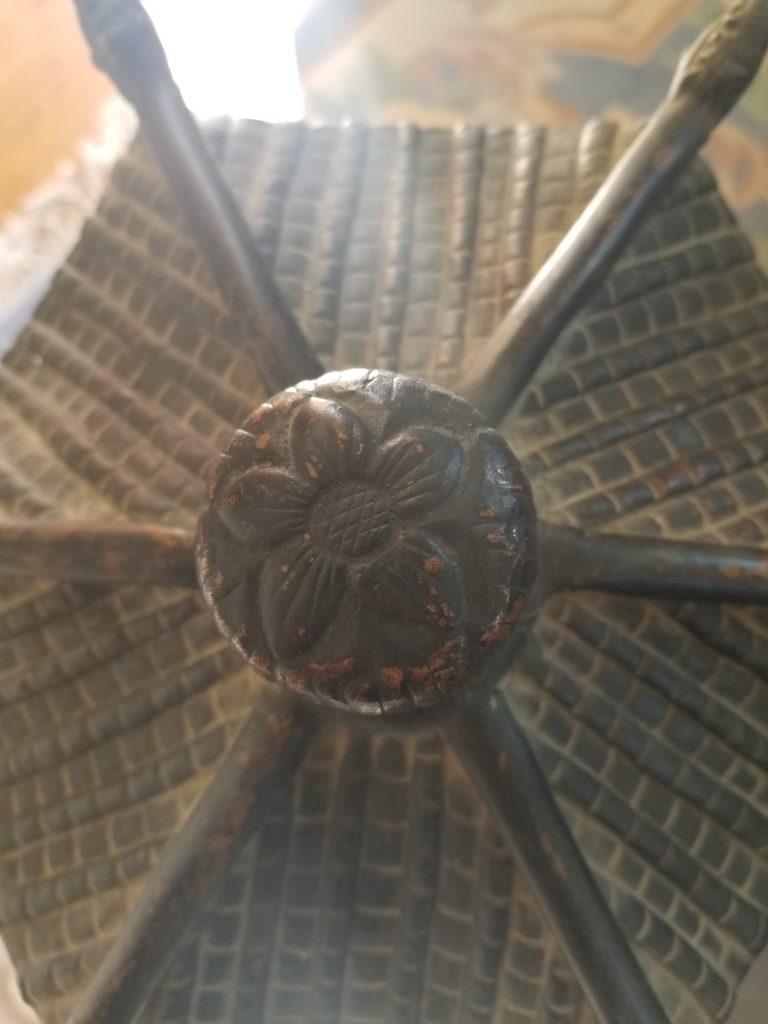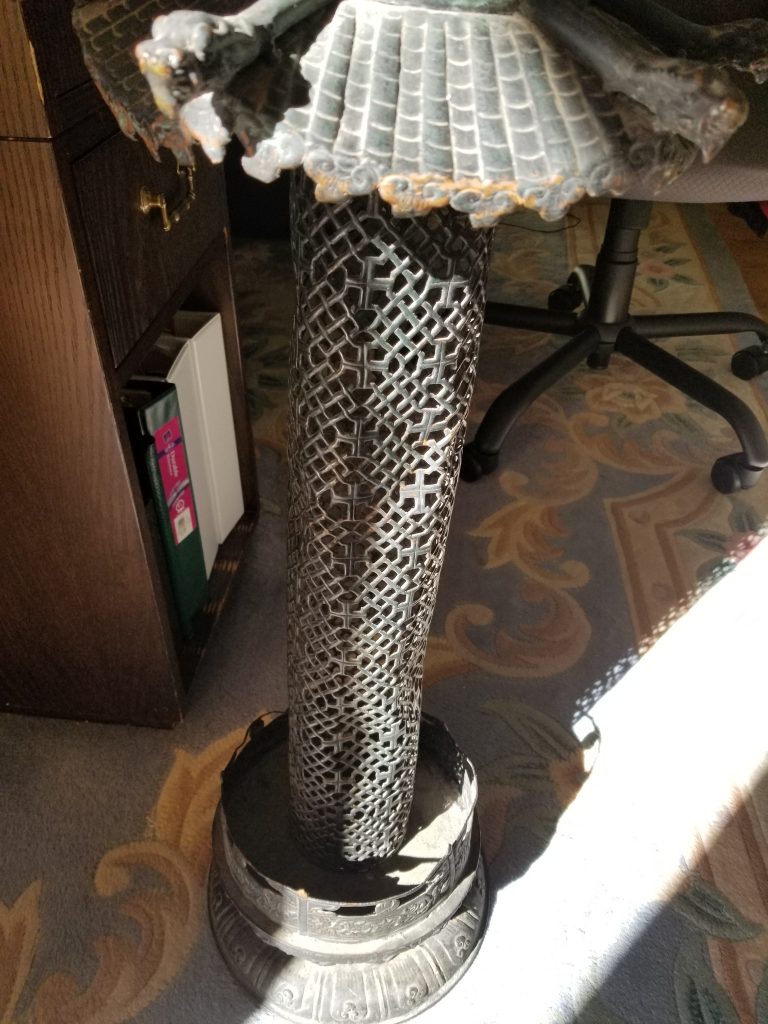Perhaps it is symptomatic of the age in which we live that we look to science and the technology that it propels to find answers to our questions about art. Recently, there have been attempts to apply scientifically derived techniques to the dating and evaluation of ancient Chinese jade. A European auction house has mounted a sale of jade objects in which it is claimed that “two years of research were invested into confirming the authenticity of this important collection. As a result a new scientific method to establish the authenticity of ancient jades has been developed.”
The basis of this “new scientific method” consists of an examination of the tool markings present and analysis of the evidence of weathering. Weathering is defined as the natural process of the alteration of the surface of jade. The sale catalogue states that sometimes in archaeological finds where no weathering may be traced the question is raised of how to establish the age of the object. The sale catalogue continues, “Essentially, if a jade object has no evidence of weathering- something which cannot be determined with the naked eye- it must date from within a time bracket of 1000 years. In such a case, appraisal of the working techniques and stylistic assessment must be relied upon.” The catalogue continues with the admonition that “every collector should make use of a microscope… this is the first stage in the scientific analysis.”
In reviewing the various scientific testing techniques developed over the past twenty years, several procedures have evolved into common use. Thermal luminescence (TL) is the emission of light from an insulator or semi-conductor when it is heated. TL dating is limited by the response of the samples that are available. The response is checked by irradiating the sample with a standard or known source of radiation prior to measurement of its TL. This calibration procedure enables the TL sensitivity of the material to be determined. Such a calibration, along with the measured natural TL of the sample, enables a determination of age. This testing procedure, however, maybe defeated by fakers who mix older materials with new. Also, it does not have applicability to jade works of art. Another technique used is x-ray fluorescence which yields information about the constituent elements, but does not yield age data. Electron spectroscopy (ESCA) is another way of analyzing the surface of an object and of its elemental makeup. This has been used successfully by Dr. Wen Guang in testing excavated jades from archeological sites throughout China [See the article, “Mineralogical Inquiries into Chinese Neolithic Jades” published in The Journal of Chinese Jade. 1996. S. Bernstein, editor]. However, despite these claims of a new method to authenticate the date of manufacture of jade, the consensus of art historians and scientists that the author canvassed is that there is not, at the present time, a reliable scientific basis alone for the dating of a worked, or prehended jade object.
The verisimilitude of results from the testing procedures may result when scientific testing alone is applied to the dating of jade. It is the author’s opinion that while it is admirable to apply scientific testing techniques to jade, the observer must understand its’ limitations and place these procedures into an overall methodology of stylistic as well as physical review. Science must go hand in hand with art historianship. The art historian has the visual ability to understand an object within its cultural and historical context. Scientific applications within this framework support the conclusions of the art historian, not vice versa. If the results of such testing do not support these assumptions, then further enquiry must be made to explain the discrepancy. In the auction catalogue mentioned, this key element of art historianship in setting the age parameters is missing. Professor James Cahill remarked during the recent symposium Issues of Authenticity in Chinese Painting held at the Metropolitan Museum, New York in December, 1999 that in addition to scientific measurement we should “ not forget to look at the painting.” What is a scientist to test for if the object before him sits with no reference points in a historical context or archeological background? Those individuals who produce fakes are amazingly proficient at adapting to the nuances of scientific testing [See the author’s essay “Fishing in the Jade Pond” published in Orientations magazine, September 1995].
It is correct thinking that the art historian who has the benefit of supporting scientific analysis of the art object may produce a clearly reasoned and published description which adds to the body of research. Based on visual analysis alone one can see almost anything without some archeologically derived point of reference. Herein lies the flaw in this latest attempt to date jade works of art scientifically. There is a popular misconception that scientific testing is somehow “ objective” while art history is “subjective”. Clearly this is not the case. It is the interpretation of the results which requires expertise. Reliable results depend on a comparison with a control group. In the case of jade, this consists of comparative analysis of the results to similar testing procedures on scientifically excavated jades. A significant example of analysis of scientifically excavated jades are those from the tomb of the Western King of Nanyue discovered in Guangzhou in Guandong Province in 1984. Results of scientific testing suggest that the jade used to work the jades have a similar consistency of chemical makeup; i.e., the material originated from the same source. Nowhere within the results is there a claim of precise dating of the weathering of these objects recovered by Chinese archeologists. More importantly, there is no basis for the arbitrary parameter of 1000 years for surface alteration to take place on a jade stone. A laboratory test conducted by scientists at the University of Antwerp in 1995 successfully induced surface effect on jade over a period of several months exposure to a tomb like environment. The results demonstrated that surface alteration could be induced in a relatively short time duration of several months. To quote the published paper of the experiment, “ This means that the process takes place over a relatively short period of time ( i.e., during the months that the buried bodies decompose). This explains why there is no correlation between the degree of alteration and the age of the object or the length of time it has been buried. It is, rather, a function of the extent and duration of contact between the object and the alkaline solution and the microstructure of the mineral.” [Results published in Chinese Jade and Scroll Paintings from the Dongxi collection, Nicole De Bisscop. Kredietbank, N.V. 1995 Brussels. Pp.22-24].
Without the input of the art historian or archaeologist, it is far too easy for scientific testing results to be misinterpreted. This does a disservice to both art historianship and scientific enquiry and adversely affects the jade market worldwide by creating the impression of scientific infallibility. Comparison with archaeologically derived examples remains our strongest and most potent analytical tool. Science alone does not provide a panacea for answering our questions about the absolute dating of jade works of art.
Sam Bernstein is a private dealer and appraiser and owner of S. Bernstein & Co., a specialist dealer in Chinese jade located in the Bay Area, and has written and lectured extensively on the subject of Chinese jade both in the United States and the Peoples’ Republic of China.



